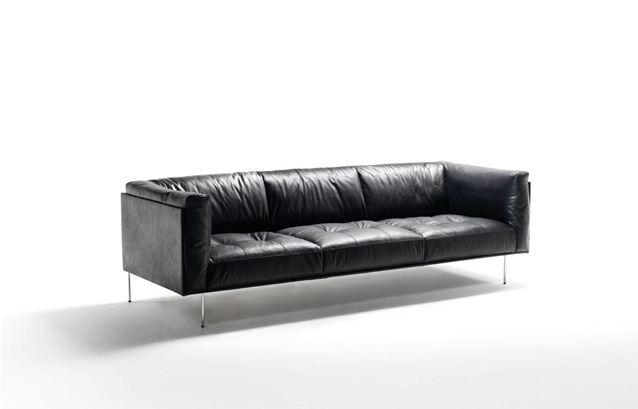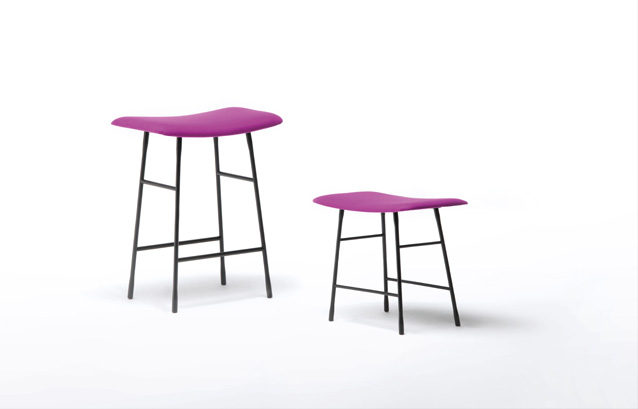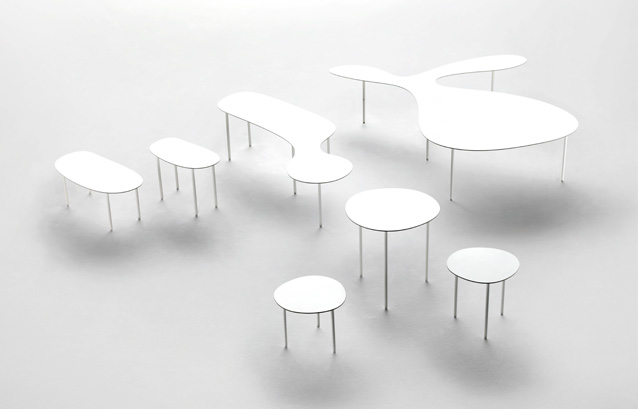Working with Japanese artist/designer Shiro Kuramata, Arik Levy, Claesson Koivisto Rune, Nathan Yong and Studio Juju and host of up and coming young designers, since 1988 Italian architect Piero Lissoni has overseen the collection as both art director and designer, steering the group and fostering its collaborations.
In 2012 the Living Divani collection includes seats, armchairs, beds, tables, bookcases, carpets and an outdoor range. New releases include Off Cut and Stack Table by Nathan Yong, a bookshelf and trio of stackable tables that respond to smaller living spaces; Hinge by Franceso Rota, a pared back stool with a nod to the 1950s; B2 by Victor Vasilev, a coffee table composed of varying heights to accommodate books and objects; the Chemise Sofa Bed and Rod sofa collection by Piero Lissoni; the ‘folded’ armchair Kiru with a concealed swivel base by Giopato & Coombes; Kalé by Mario Ferrarini that is both stool and table; and the Rabbit and the Tortoise collection by Studio Juji, a family of seven tables in friendly organic shapes.
As the group celebrates close to 40 years in the design industry, Living Divani was recently selected to join the prestigious Altagamma foundation that recognises Italian design excellence.

ROD by Piero Lissoni – Sofa, Armchair and Bench
Frame structure in painted tubular and drawn steel, seat sprung with coated rubber elastic straps. Chromed feet screwed to the base through a 70mm turned bushing, embedded and welded to the structure. Backrest and armrest structure in 8 mm HPL layers. Covering in 100% polyether, thermally bonded onto a polyamide velveteen backing. Back and seat cushions in prewashed and sterilized goose down, with polyurethane foam insert. The seat cushions are quilted with buttons at sight. Armrest cushions in polyurethane foam covered with goose down, with a poplar plywood supporting panel. Leather or fabric upholstery, fully removable with Velcro.

HINGE by Francesco Rota – Stool
Stool with two different heights. Curved plywood poplar wood seat frame. Polyurethane foam padding covered with polyester fibre. Base structure in turned steel epoxy powder coated in RAL 9010 white and 9017 black, with adjustable tips. Leather or fabric upholstery, both fully removable with zip.

RABBIT AND THE TORTOISE COLLECTION by Studio Juju – Coffee Tables
Family of 7 tables of different shapes and sizes. Top in 3 mm laser cut sheet steel and legs in tubular steel 12mm screwed to the top. Tips in PVC. Epoxy powder coated in RAL 9010 white and 9017 black.

B2 by Victor Vasilev – Coffee Table
Table with steel structure consisting of 4 tops, in different heights and dimensions, of 2.5mm metal sheet screwed to the base, epoxy powder coated in RAL 9010 white and 9017 black.
Living Divani is available from Space Furniture.

